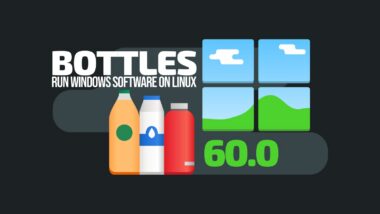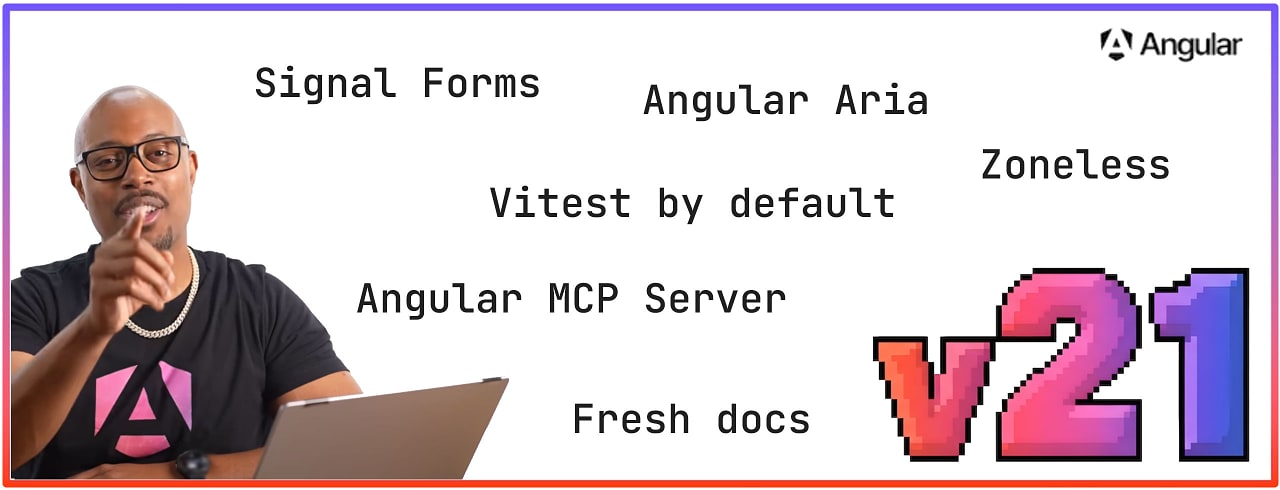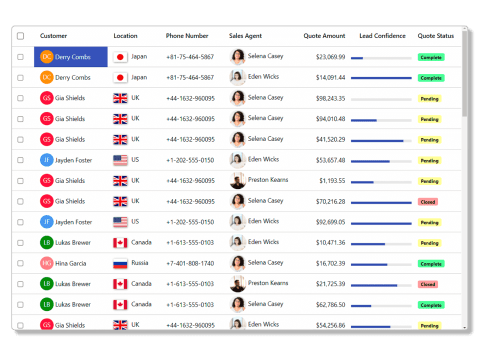23 Nov 2025
 Hacker News
Hacker News
GCC SC approves inclusion of Algol 68 Front End
23 Nov 2025 2:18am GMT
Meta buried 'causal' evidence of social media harm, US court filings allege
23 Nov 2025 1:09am GMT
Germany to classify date rape drugs as weapons to ensure justice for survivors
23 Nov 2025 1:00am GMT
22 Nov 2025
 Linuxiac
Linuxiac
KDE Plasma 6.6 Will Introduce Per-Window Screen-Recording Exclusions

KDE Plasma 6.6 desktop environment will introduce per-window screen-recording exclusions, richer blur effects for dark themes, and more.
22 Nov 2025 3:28pm GMT
Bottles 60.0 Launches with Native Wayland Support

Bottles 60.0, a Wine prefix manager for running Windows apps on Linux, adds native Wayland support, a refreshed UI, and more.
22 Nov 2025 1:20pm GMT
Self-Hosters Confirm It Again: Linux Dominates the Homelab OS Space

According to the 2025 Self-Host survey from selfh.st, Linux dominates self-hosting setups and homelab operating systems.
22 Nov 2025 12:04pm GMT
21 Nov 2025
 OMG! Ubuntu
OMG! Ubuntu
The Raspberry Pi 500+ Works as a Standalone Keyboard (Well, Kinda)
 Can the Raspberry Pi 500+ work as a standalone Bluetooth keyboard? Yes, using the open-source btferret project - but not without limitations, as I report.
Can the Raspberry Pi 500+ work as a standalone Bluetooth keyboard? Yes, using the open-source btferret project - but not without limitations, as I report.
You're reading The Raspberry Pi 500+ Works as a Standalone Keyboard (Well, Kinda), a blog post from OMG! Ubuntu. Do not reproduce elsewhere without permission.
21 Nov 2025 11:12pm GMT
 Ubuntu blog
Ubuntu blog
Open design: the opportunity design students didn’t know they were missing
What if you could work on real-world projects, shape cutting-edge technology, collaborate with developers across the world, make a meaningful impact with your design skills, and grow your portfolio… all without applying for an internship or waiting for graduation? That's what we aim to do with open design: an opportunity for universities and students of […]
21 Nov 2025 9:39am GMT
Anbox Cloud 1.28.0 is now available!
Enhanced Android device simulation, smarter diagnostics, and OIDC-enforced authentication The Anbox Cloud team has been working around the clock to release Anbox Cloud 1.28.0! We're very proud of this release that adds robust authentication, improved diagnostic tools, and expanded simulation options, making Anbox Cloud even more secure, flexible, and developer-friendly for running large-scale Android workloads. […]
21 Nov 2025 8:00am GMT
 JavaScript Weekly
JavaScript Weekly
A significant Angular release
Photo used with the kind permission of Rob Palmer
|
21 Nov 2025 12:00am GMT
20 Nov 2025
 OMG! Ubuntu
OMG! Ubuntu
Use AirPods Pro Features on Linux with LibrePods
 LibrePods brings AirPods Pro features to Linux desktops, including active noise cancellation, transparency mode, ear detection and accurate battery levels.
LibrePods brings AirPods Pro features to Linux desktops, including active noise cancellation, transparency mode, ear detection and accurate battery levels.
You're reading Use AirPods Pro Features on Linux with LibrePods, a blog post from OMG! Ubuntu. Do not reproduce elsewhere without permission.
20 Nov 2025 11:58pm GMT
19 Nov 2025
 OMG! Ubuntu
OMG! Ubuntu
TABS API is Mozilla’s Latest Bet on the Agentic Web
 Mozilla's new TABS API helps developers build AI agents to automate web tasks, as the company continues to bet on AI as its future. Details, pricing, and links inside.
Mozilla's new TABS API helps developers build AI agents to automate web tasks, as the company continues to bet on AI as its future. Details, pricing, and links inside.
You're reading TABS API is Mozilla's Latest Bet on the Agentic Web, a blog post from OMG! Ubuntu. Do not reproduce elsewhere without permission.
19 Nov 2025 4:11pm GMT
18 Nov 2025
 Ubuntu blog
Ubuntu blog
83% of organizations see value in adopting open source, but report major gaps in security and governance
A new Linux Foundation report reveals how organizations worldwide are adopting, using, and perceiving open source software. The Linux Foundation's latest report, The state of global open source, has just been released in collaboration with Canonical. The report follows the Linux Foundation's European spotlight report, released earlier this year, and confirms that many of the […]
18 Nov 2025 4:10pm GMT
14 Nov 2025
 JavaScript Weekly
JavaScript Weekly
Every JavaScript engine all at once
|
14 Nov 2025 12:00am GMT
11 Nov 2025
 Kubernetes Blog
Kubernetes Blog
Ingress NGINX Retirement: What You Need to Know
To prioritize the safety and security of the ecosystem, Kubernetes SIG Network and the Security Response Committee are announcing the upcoming retirement of Ingress NGINX. Best-effort maintenance will continue until March 2026. Afterward, there will be no further releases, no bugfixes, and no updates to resolve any security vulnerabilities that may be discovered. Existing deployments of Ingress NGINX will continue to function and installation artifacts will remain available.
We recommend migrating to one of the many alternatives. Consider migrating to Gateway API, the modern replacement for Ingress. If you must continue using Ingress, many alternative Ingress controllers are listed in the Kubernetes documentation. Continue reading for further information about the history and current state of Ingress NGINX, as well as next steps.
About Ingress NGINX
Ingress is the original user-friendly way to direct network traffic to workloads running on Kubernetes. (Gateway API is a newer way to achieve many of the same goals.) In order for an Ingress to work in your cluster, there must be an Ingress controller running. There are many Ingress controller choices available, which serve the needs of different users and use cases. Some are cloud-provider specific, while others have more general applicability.
Ingress NGINX was an Ingress controller, developed early in the history of the Kubernetes project as an example implementation of the API. It became very popular due to its tremendous flexibility, breadth of features, and independence from any particular cloud or infrastructure provider. Since those days, many other Ingress controllers have been created within the Kubernetes project by community groups, and by cloud native vendors. Ingress NGINX has continued to be one of the most popular, deployed as part of many hosted Kubernetes platforms and within innumerable independent users' clusters.
History and Challenges
The breadth and flexibility of Ingress NGINX has caused maintenance challenges. Changing expectations about cloud native software have also added complications. What were once considered helpful options have sometimes come to be considered serious security flaws, such as the ability to add arbitrary NGINX configuration directives via the "snippets" annotations. Yesterday's flexibility has become today's insurmountable technical debt.
Despite the project's popularity among users, Ingress NGINX has always struggled with insufficient or barely-sufficient maintainership. For years, the project has had only one or two people doing development work, on their own time, after work hours and on weekends. Last year, the Ingress NGINX maintainers announced their plans to wind down Ingress NGINX and develop a replacement controller together with the Gateway API community. Unfortunately, even that announcement failed to generate additional interest in helping maintain Ingress NGINX or develop InGate to replace it. (InGate development never progressed far enough to create a mature replacement; it will also be retired.)
Current State and Next Steps
Currently, Ingress NGINX is receiving best-effort maintenance. SIG Network and the Security Response Committee have exhausted our efforts to find additional support to make Ingress NGINX sustainable. To prioritize user safety, we must retire the project.
In March 2026, Ingress NGINX maintenance will be halted, and the project will be retired. After that time, there will be no further releases, no bugfixes, and no updates to resolve any security vulnerabilities that may be discovered. The GitHub repositories will be made read-only and left available for reference.
Existing deployments of Ingress NGINX will not be broken. Existing project artifacts such as Helm charts and container images will remain available.
In most cases, you can check whether you use Ingress NGINX by running kubectl get pods \--all-namespaces \--selector app.kubernetes.io/name=ingress-nginx with cluster administrator permissions.
We would like to thank the Ingress NGINX maintainers for their work in creating and maintaining this project-their dedication remains impressive. This Ingress controller has powered billions of requests in datacenters and homelabs all around the world. In a lot of ways, Kubernetes wouldn't be where it is without Ingress NGINX, and we are grateful for so many years of incredible effort.
SIG Network and the Security Response Committee recommend that all Ingress NGINX users begin migration to Gateway API or another Ingress controller immediately. Many options are listed in the Kubernetes documentation: Gateway API, Ingress. Additional options may be available from vendors you work with.
11 Nov 2025 6:30pm GMT
09 Nov 2025
 Kubernetes Blog
Kubernetes Blog
Announcing the 2025 Steering Committee Election Results
The 2025 Steering Committee Election is now complete. The Kubernetes Steering Committee consists of 7 seats, 4 of which were up for election in 2025. Incoming committee members serve a term of 2 years, and all members are elected by the Kubernetes Community.
The Steering Committee oversees the governance of the entire Kubernetes project. With that great power comes great responsibility. You can learn more about the steering committee's role in their charter.
Thank you to everyone who voted in the election; your participation helps support the community's continued health and success.
Results
Congratulations to the elected committee members whose two year terms begin immediately (listed in alphabetical order by GitHub handle):
- Kat Cosgrove (@katcosgrove), Minimus
- Paco Xu (@pacoxu), DaoCloud
- Rita Zhang (@ritazh), Microsoft
- Maciej Szulik (@soltysh), Defense Unicorns
They join continuing members:
- Antonio Ojea (@aojea), Google
- Benjamin Elder (@BenTheElder), Google
- Sascha Grunert (@saschagrunert), Red Hat
Maciej Szulik and Paco Xu are returning Steering Committee Members.
Big thanks!
Thank you and congratulations on a successful election to this round's election officers:
- Christoph Blecker (@cblecker)
- Nina Polshakova (@npolshakova)
- Sreeram Venkitesh (@sreeram-venkitesh)
Thanks to the Emeritus Steering Committee Members. Your service is appreciated by the community:
- Stephen Augustus (@justaugustus), Bloomberg
- Patrick Ohly (@pohly), Intel
And thank you to all the candidates who came forward to run for election.
Get involved with the Steering Committee
This governing body, like all of Kubernetes, is open to all. You can follow along with Steering Committee meeting notes and weigh in by filing an issue or creating a PR against their repo. They have an open meeting on the first Wednesday at 8am PT of every month. They can also be contacted at their public mailing list steering@kubernetes.io.
You can see what the Steering Committee meetings are all about by watching past meetings on the YouTube Playlist.
This post was adapted from one written by the Contributor Comms Subproject. If you want to write stories about the Kubernetes community, learn more about us.
This article was revised in November 2025 to update the information about when the steering committee meets.
09 Nov 2025 8:10pm GMT
07 Nov 2025
 JavaScript Weekly
JavaScript Weekly
How JavaScript source maps actually work
|
07 Nov 2025 12:00am GMT
06 Nov 2025
 Kubernetes Blog
Kubernetes Blog
Gateway API 1.4: New Features
Ready to rock your Kubernetes networking? The Kubernetes SIG Network community presented the General Availability (GA) release of Gateway API (v1.4.0)! Released on October 6, 2025, version 1.4.0 reinforces the path for modern, expressive, and extensible service networking in Kubernetes.
Gateway API v1.4.0 brings three new features to the Standard channel (Gateway API's GA release channel):
- BackendTLSPolicy for TLS between gateways and backends
supportedFeaturesin GatewayClass status- Named rules for Routes
and introduces three new experimental features:
- Mesh resource for service mesh configuration
- Default gateways to ease configuration burden**
externalAuthfilter for HTTPRoute
Graduations to Standard Channel
Backend TLS policy
Leads: Candace Holman, Norwin Schnyder, Katarzyna Łach
GEP-1897: BackendTLSPolicy
BackendTLSPolicy is a new Gateway API type for specifying the TLS configuration of the connection from the Gateway to backend pod(s). . Prior to the introduction of BackendTLSPolicy, there was no API specification that allowed encrypted traffic on the hop from Gateway to backend.
The BackendTLSPolicy validation configuration requires a hostname. This hostname serves two purposes. It is used as the SNI header when connecting to the backend and for authentication, the certificate presented by the backend must match this hostname, unless subjectAltNames is explicitly specified.
If subjectAltNames (SANs) are specified, the hostname is only used for SNI, and authentication is performed against the SANs instead. If you still need to authenticate against the hostname value in this case, you MUST add it to the subjectAltNames list.
BackendTLSPolicy validation configuration also requires either caCertificateRefs or wellKnownCACertificates. caCertificateRefs refer to one or more (up to 8) PEM-encoded TLS certificate bundles. If there are no specific certificates to use, then depending on your implementation, you may use wellKnownCACertificates, set to "System" to tell the Gateway to use an implementation-specific set of trusted CA Certificates.
In this example, the BackendTLSPolicy is configured to use certificates defined in the auth-cert ConfigMap to connect with a TLS-encrypted upstream connection where pods backing the auth service are expected to serve a valid certificate for auth.example.com. It uses subjectAltNames with a Hostname type, but you may also use a URI type.
apiVersion: gateway.networking.k8s.io/v1
kind: BackendTLSPolicy
metadata:
name: tls-upstream-auth
spec:
targetRefs:
- kind: Service
name: auth
group: ""
sectionName: "https"
validation:
caCertificateRefs:
- group: "" # core API group
kind: ConfigMap
name: auth-cert
subjectAltNames:
- type: "Hostname"
hostname: "auth.example.com"
In this example, the BackendTLSPolicy is configured to use system certificates to connect with a TLS-encrypted backend connection where Pods backing the dev Service are expected to serve a valid certificate for dev.example.com.
apiVersion: gateway.networking.k8s.io/v1
kind: BackendTLSPolicy
metadata:
name: tls-upstream-dev
spec:
targetRefs:
- kind: Service
name: dev
group: ""
sectionName: "btls"
validation:
wellKnownCACertificates: "System"
hostname: dev.example.com
More information on the configuration of TLS in Gateway API can be found in Gateway API - TLS Configuration.
Status information about the features that an implementation supports
Leads: Lior Lieberman, Beka Modebadze
GEP-2162: Supported features in GatewayClass Status
GatewayClass status has a new field, supportedFeatures. This addition allows implementations to declare the set of features they support. This provides a clear way for users and tools to understand the capabilities of a given GatewayClass.
This feature's name for conformance tests (and GatewayClass status reporting) is SupportedFeatures. Implementations must populate the supportedFeatures field in the .status of the GatewayClass before the GatewayClass is accepted, or in the same operation.
Here's an example of a supportedFeatures published under GatewayClass' .status:
apiVersion: gateway.networking.k8s.io/v1
kind: GatewayClass
...
status:
conditions:
- lastTransitionTime: "2022-11-16T10:33:06Z"
message: Handled by Foo controller
observedGeneration: 1
reason: Accepted
status: "True"
type: Accepted
supportedFeatures:
- HTTPRoute
- HTTPRouteHostRewrite
- HTTPRoutePortRedirect
- HTTPRouteQueryParamMatching
Graduation of SupportedFeatures to Standard, helped improve the conformance testing process for Gateway API. The conformance test suite will now automatically run tests based on the features populated in the GatewayClass' status. This creates a strong, verifiable link between an implementation's declared capabilities and the test results, making it easier for implementers to run the correct conformance tests and for users to trust the conformance reports.
This means when the SupportedFeatures field is populated in the GatewayClass status there will be no need for additional conformance tests flags like -suported-features, or -exempt or -all-features. It's important to note that Mesh features are an exception to this and can be tested for conformance by using Conformance Profiles, or by manually providing any combination of features related flags until the dedicated resource graduates from the experimental channel.
Named rules for Routes
GEP-995: Adding a new name field to all xRouteRule types (HTTPRouteRule, GRPCRouteRule, etc.)
Leads: Guilherme Cassolato
This enhancement enables route rules to be explicitly identified and referenced across the Gateway API ecosystem. Some of the key use cases include:
- Status: Allowing status conditions to reference specific rules directly by name.
- Observability: Making it easier to identify individual rules in logs, traces, and metrics.
- Policies: Enabling policies (GEP-713) to target specific route rules via the
sectionNamefield in theirtargetRef[s]. - Tooling: Simplifying filtering and referencing of route rules in tools such as
gwctl,kubectl, and general-purpose utilities likejqandyq. - Internal configuration mapping: Facilitating the generation of internal configurations that reference route rules by name within gateway and mesh implementations.
This follows the same well-established pattern already adopted for Gateway listeners, Service ports, Pods (and containers), and many other Kubernetes resources.
While the new name field is optional (so existing resources remain valid), its use is strongly encouraged. Implementations are not expected to assign a default value, but they may enforce constraints such as immutability.
Finally, keep in mind that the name format is validated, and other fields (such as sectionName) may impose additional, indirect constraints.
Experimental channel changes
Enabling external Auth for HTTPRoute
Giving Gateway API the ability to enforce authentication and maybe authorization as well at the Gateway or HTTPRoute level has been a highly requested feature for a long time. (See the GEP-1494 issue for some background.)
This Gateway API release adds an Experimental filter in HTTPRoute that tells the Gateway API implementation to call out to an external service to authenticate (and, optionally, authorize) requests.
This filter is based on the Envoy ext_authz API, and allows talking to an Auth service that uses either gRPC or HTTP for its protocol.
Both methods allow the configuration of what headers to forward to the Auth service, with the HTTP protocol allowing some extra information like a prefix path.
A HTTP example might look like this (noting that this example requires the Experimental channel to be installed and an implementation that supports External Auth to actually understand the config):
apiVersion: gateway.networking.k8s.io/v1
kind: HTTPRoute
metadata:
name: require-auth
namespace: default
spec:
parentRefs:
- name: your-gateway-here
rules:
- matches:
- path:
type: Prefix
value: /admin
filters:
- type: ExternalAuth
externalAuth:
protocol: HTTP
backendRef:
name: auth-service
http:
# These headers are always sent for the HTTP protocol,
# but are included here for illustrative purposes
allowedHeaders:
- Host
- Method
- Path
- Content-Length
- Authorization
backendRefs:
- name: admin-backend
port: 8080
This allows the backend Auth service to use the supplied headers to make a determination about the authentication for the request.
When a request is allowed, the external Auth service will respond with a 200 HTTP response code, and optionally extra headers to be included in the request that is forwarded to the backend. When the request is denied, the Auth service will respond with a 403 HTTP response.
Since the Authorization header is used in many authentication methods, this method can be used to do Basic, Oauth, JWT, and other common authentication and authorization methods.
Mesh resource
Lead(s): Flynn
GEP-3949: Mesh-wide configuration and supported features
Gateway API v1.4.0 introduces a new experimental Mesh resource, which provides a way to configure mesh-wide settings and discover the features supported by a given mesh implementation. This resource is analogous to the Gateway resource and will initially be mainly used for conformance testing, with plans to extend its use to off-cluster Gateways in the future.
The Mesh resource is cluster-scoped and, as an experimental feature, is named XMesh and resides in the gateway.networking.x-k8s.io API group. A key field is controllerName, which specifies the mesh implementation responsible for the resource. The resource's status stanza indicates whether the mesh implementation has accepted it and lists the features the mesh supports.
One of the goals of this GEP is to avoid making it more difficult for users to adopt a mesh. To simplify adoption, mesh implementations are expected to create a default Mesh resource upon startup if one with a matching controllerName doesn't already exist. This avoids the need for manual creation of the resource to begin using a mesh.
The new XMesh API kind, within the gateway.networking.x-k8s.io/v1alpha1 API group, provides a central point for mesh configuration and feature discovery (source).
A minimal XMesh object specifies the controllerName:
apiVersion: gateway.networking.x-k8s.io/v1alpha1
kind: XMesh
metadata:
name: one-mesh-to-mesh-them-all
spec:
controllerName: one-mesh.example.com/one-mesh
The mesh implementation populates the status field to confirm it has accepted the resource and to list its supported features ( source):
status:
conditions:
- type: Accepted
status: "True"
reason: Accepted
supportedFeatures:
- name: MeshHTTPRoute
- name: OffClusterGateway
Introducing default Gateways
Lead(s): Flynn
GEP-3793: Allowing Gateways to program some routes by default.
For application developers, one common piece of feedback has been the need to explicitly name a parent Gateway for every single north-south Route. While this explicitness prevents ambiguity, it adds friction, especially for developers who just want to expose their application to the outside world without worrying about the underlying infrastructure's naming scheme. To address this, we have introduce the concept of Default Gateways.
For application developers: Just "use the default"
As an application developer, you often don't care about the specific Gateway your traffic flows through, you just want it to work. With this enhancement, you can now create a Route and simply ask it to use a default Gateway.
This is done by setting the new useDefaultGateways field in your Route's spec.
Here's a simple HTTPRoute that uses a default Gateway:
apiVersion: gateway.networking.k8s.io/v1
kind: HTTPRoute
metadata:
name: my-route
spec:
useDefaultGateways: All
rules:
- backendRefs:
- name: my-service
port: 80
That's it! No more need to hunt down the correct Gateway name for your environment. Your Route is now a "defaulted Route."
For cluster operators: You're still in control
This feature doesn't take control away from cluster operators ("Chihiro"). In fact, they have explicit control over which Gateways can act as a default. A Gateway will only accept these defaulted Routes if it is configured to do so.
You can also use a ValidatingAdmissionPolicy to either require or even forbid for Routes to rely on a default Gateway.
As a cluster operator, you can designate a Gateway as a default by setting the (new) .spec.defaultScope field:
apiVersion: gateway.networking.k8s.io/v1
kind: Gateway
metadata:
name: my-default-gateway
namespace: default
spec:
defaultScope: All
# ... other gateway configuration
Operators can choose to have no default Gateways, or even multiple.
How it works and key details
-
To maintain a clean, GitOps-friendly workflow, a default Gateway does not modify the
spec.parentRefsof your Route. Instead, the binding is reflected in the Route'sstatusfield. You can always inspect thestatus.parentsstanza of your Route to see exactly which Gateway or Gateways have accepted it. This preserves your original intent and avoids conflicts with CD tools. -
The design explicitly supports having multiple Gateways designated as defaults within a cluster. When this happens, a defaulted Route will bind to all of them. This enables cluster operators to perform zero-downtime migrations and testing of new default Gateways.
-
You can create a single Route that handles both north-south traffic (traffic entering or leaving the cluster, via a default Gateway) and east-west/mesh traffic (traffic between services within the cluster), by explicitly referencing a Service in
parentRefs.
Default Gateways represent a significant step forward in making the Gateway API simpler and more intuitive for everyday use cases, bridging the gap between the flexibility needed by operators and the simplicity desired by developers.
Configuring client certificate validation
Lead(s): Arko Dasgupta, Katarzyna Łach
GEP-91: Address connection coalescing security issue
This release brings updates for configuring client certificate validation, addressing a critical security vulnerability related to connection reuse. HTTP connection coalescing is a web performance optimization that allows a client to reuse an existing TLS connection for requests to different domains. While this reduces the overhead of establishing new connections, it introduces a security risk in the context of API gateways. The ability to reuse a single TLS connection across multiple Listeners brings the need to introduce shared client certificate configuration in order to avoid unauthorized access.
Why SNI-based mTLS is not the answer
One might think that using Server Name Indication (SNI) to differentiate between Listeners would solve this problem. However, TLS SNI is not a reliable mechanism for enforcing security policies in a connection coalescing scenario. A client could use a single TLS connection for multiple peer connections, as long as they are all covered by the same certificate. This means that a client could establish a connection by indicating one peer identity (using SNI), and then reuse that connection to access a different virtual host that is listening on the same IP address and port. That reuse, which is controlled by client side heuristics, could bypass mutual TLS policies that were specific to the second listener configuration.
Here's an example to help explain it:
apiVersion: gateway.networking.k8s.io/v1
kind: Gateway
metadata:
name: wildcard-tls-gateway
spec:
gatewayClassName: example
listeners:
- name: foo-https
protocol: HTTPS
port: 443
hostname: foo.example.com
tls:
certificateRefs:
- group: "" # core API group
kind: Secret
name: foo-example-com-cert # SAN: foo.example.com
- name: wildcard-https
protocol: HTTPS
port: 443
hostname: "*.example.com"
tls:
certificateRefs:
- group: "" # core API group
kind: Secret
name: wildcard-example-com-cert # SAN: *.example.com
I have configured a Gateway with two listeners, both having overlapping hostnames. My intention is for the foo-http listener to be accessible only by clients presenting the foo-example-com-cert certificate. In contrast, the wildcard-https listener should allow access to a broader audience using any certificate valid for the *.example.com domain.
Consider a scenario where a client initially connects to foo.example.com. The server requests and successfully validates the foo-example-com-cert certificate, establishing the connection. Subsequently, the same client wishes to access other sites within this domain, such as bar.example.com, which is handled by the wildcard-https listener. Due to connection reuse, clients can access wildcard-https backends without an additional TLS handshake on the existing connection. This process functions as expected.
However, a critical security vulnerability arises when the order of access is reversed. If a client first connects to bar.example.com and presents a valid bar.example.com certificate, the connection is successfully established. If this client then attempts to access foo.example.com, the existing connection's client certificate will not be re-validated. This allows the client to bypass the specific certificate requirement for the foo backend, leading to a serious security breach.
The solution: per-port TLS configuration
The updated Gateway API gains a tls field in the .spec of a Gateway, that allows you to define a default client certificate validation configuration for all Listeners, and then if needed override it on a per-port basis. This provides a flexible and powerful way to manage your TLS policies.
Here's a look at the updated API definitions (shown as Go source code):
// GatewaySpec defines the desired state of Gateway.
type GatewaySpec struct {
...
// GatewayTLSConfig specifies frontend tls configuration for gateway.
TLS *GatewayTLSConfig `json:"tls,omitempty"`
}
// GatewayTLSConfig specifies frontend tls configuration for gateway.
type GatewayTLSConfig struct {
// Default specifies the default client certificate validation configuration
Default TLSConfig `json:"default"`
// PerPort specifies tls configuration assigned per port.
PerPort []TLSPortConfig `json:"perPort,omitempty"`
}
// TLSPortConfig describes a TLS configuration for a specific port.
type TLSPortConfig struct {
// The Port indicates the Port Number to which the TLS configuration will be applied.
Port PortNumber `json:"port"`
// TLS store the configuration that will be applied to all Listeners handling
// HTTPS traffic and matching given port.
TLS TLSConfig `json:"tls"`
}
Breaking changes
Standard GRPCRoute - .spec field required (technicality)
The promotion of GRPCRoute to Standard introduces a minor but technically breaking change regarding the presence of the top-level .spec field. As part of achieving Standard status, the Gateway API has tightened the OpenAPI schema validation within the GRPCRoute CustomResourceDefinition (CRD) to explicitly ensure the spec field is required for all GRPCRoute resources. This change enforces stricter conformance to Kubernetes object standards and enhances the resource's stability and predictability. While it is highly unlikely that users were attempting to define a GRPCRoute without any specification, any existing automation or manifests that might have relied on a relaxed interpretation allowing a completely absent spec field will now fail validation and must be updated to include the .spec field, even if empty.
Experimental CORS support in HTTPRoute - breaking change for allowCredentials field
The Gateway API subproject has introduced a breaking change to the Experimental CORS support in HTTPRoute, concerning the allowCredentials field within the CORS policy. This field's definition has been strictly aligned with the upstream CORS specification, which dictates that the corresponding Access-Control-Allow-Credentials header must represent a Boolean value. Previously, the implementation might have been overly permissive, potentially accepting non-standard or string representations such as true due to relaxed schema validation. Users who were configuring CORS rules must now review their manifests and ensure the value for allowCredentials strictly conforms to the new, more restrictive schema. Any existing HTTPRoute definitions that do not adhere to this stricter validation will now be rejected by the API server, requiring a configuration update to maintain functionality.
Improving the development and usage experience
As part of this release, we have improved some of the developer experience workflow:
- Added Kube API Linter to the CI/CD pipelines, reducing the burden of API reviewers and also reducing the amount of common mistakes.
- Improving the execution time of CRD tests with the usage of
envtest.
Additionally, as part of the effort to improve Gateway API usage experience, some efforts were made to remove some ambiguities and some old tech-debts from our documentation website:
- The API reference is now explicit when a field is
experimental. - The GEP (GatewayAPI Enhancement Proposal) navigation bar is automatically generated, reflecting the real status of the enhancements.
Try it out
Unlike other Kubernetes APIs, you don't need to upgrade to the latest version of Kubernetes to get the latest version of Gateway API. As long as you're running Kubernetes 1.26 or later, you'll be able to get up and running with this version of Gateway API.
To try out the API, follow the Getting Started Guide.
As of this writing, seven implementations are already conformant with Gateway API v1.4.0. In alphabetical order:
- Agent Gateway (with kgateway)
- Airlock Microgateway
- Envoy Gateway
- GKE Gateway
- Istio
- kgateway
- Traefik Proxy
Get involved
Wondering when a feature will be added? There are lots of opportunities to get involved and help define the future of Kubernetes routing APIs for both ingress and service mesh.
- Check out the user guides to see what use-cases can be addressed.
- Try out one of the existing Gateway controllers.
- Or join us in the community and help us build the future of Gateway API together!
The maintainers would like to thank everyone who's contributed to Gateway API, whether in the form of commits to the repo, discussion, ideas, or general support. We could never have made this kind of progress without the support of this dedicated and active community.
Related Kubernetes blog articles
- Gateway API v1.3.0: Advancements in Request Mirroring, CORS, Gateway Merging, and Retry Budgets (June 2025)
- Gateway API v1.2: WebSockets, Timeouts, Retries, and More (November 2024)
- Gateway API v1.1: Service mesh, GRPCRoute, and a whole lot more (May 2024)
- New Experimental Features in Gateway API v1.0 (November 2023)
- Gateway API v1.0: GA Release (October 2023)
06 Nov 2025 5:00pm GMT















